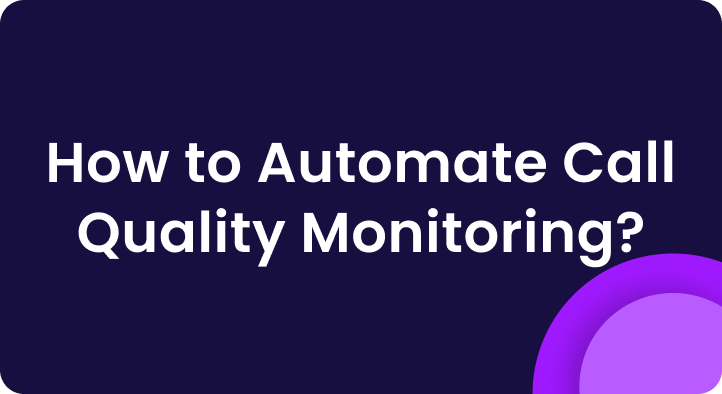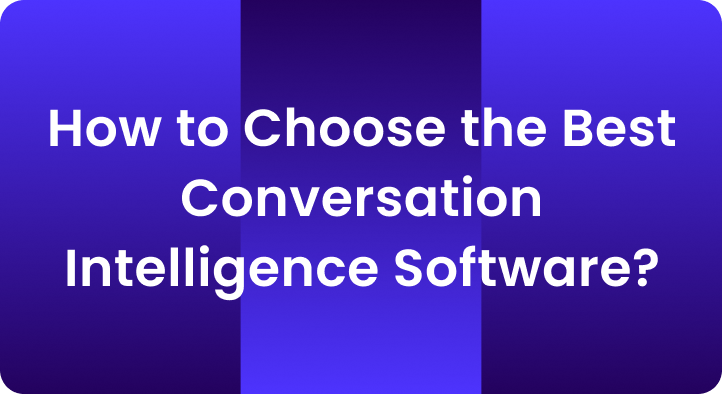TL;DR
Customer service quality assurance transforms contact centers from cost centers into growth engines. This comprehensive guide reveals how QA programs boost customer satisfaction by 5-10%, reduce costs by up to 50%, and improve agent performance by 25-30%. You’ll discover 11 proven strategies to enhance QA effectiveness, learn how to build a robust program in 6 steps, and understand why AI-powered Auto QA is revolutionizing the industry. Companies implementing structured QA programs see 90%+ first call resolution rates and achieve up to 600% ROI within three months. Whether you’re an operational manager seeking efficiency gains or a senior executive pursuing CX transformation, this guide provides actionable insights to elevate your quality assurance strategy.
What is Customer Service Quality Assurance?
Customer service quality assurance is the systematic process of evaluating, monitoring, and improving customer interactions to ensure they meet predetermined performance standards. It involves assessing how agents handle calls, chats, emails, and other communication channels to verify alignment with company guidelines, compliance requirements, and customer service best practices.
Picture this scenario: A customer contacts your support team with a billing issue. They speak with an agent who provides incorrect information.
Frustrated, they call back the next day and receive a completely different answer. After three interactions, they still don’t have a resolution.
Sound familiar?
Did you know that 86% of customers leave a brand after just two poor experiences, and 43% would consider switching after only one negative interaction.
The solution?
A robust customer service quality assurance program.
When implemented correctly, QA programs deliver measurable results: 5-10% improvements in customer satisfaction, 25-30% increases in agent efficiency, and over 50% savings in QA costs.
This guide walks you through everything you need to know about customer service quality assurance.
Ready to transform your call center?
Let’s dive in.
A. Why is customer service quality assurance crucial for your contact center?
Quality assurance ensures every interaction strengthens rather than damages those connections. Here’s why QA has become non-negotiable:
1. Enhances customer experience and satisfaction
Quality assurance directly impacts how customers perceive your brand. When QA programs identify and address service gaps, customer satisfaction scores rise significantly.
There is a direct relation between FCR and CSAT. One-percent improvement in FCR correlates with a one-percent increase in CSAT.
Organizations implementing AI-driven QA achieve more than 90% accuracy in quality evaluations, compared to 70-80% with manual scoring. This precision translates to better customer experiences.
2. Boosts agent morale and performance
Effective QA programs don’t just monitor agents, they empower them. When agents receive specific, actionable feedback based on objective criteria, they understand exactly how to improve. This clarity reduces frustration and builds confidence.
AI-enabled QA and coaching reduce call costs while simultaneously improving agent satisfaction.
Agents who receive regular, constructive coaching through QA programs demonstrate 25-30% higher efficiency and experience less burnout, directly addressing the contact center industry’s persistent turnover challenge.
3. Creates opportunities for more effective training
Call center quality assurance data reveals patterns that generic training programs miss. By analyzing QA scorecards, managers can identify whether agents struggle with specific product knowledge, soft skills, or procedural adherence.
This targeted approach allows you to create customized coaching plans that address individual learning styles and specific weaknesses.
Companies using QA-driven training programs report reducing new agent onboarding time by half while achieving faster skill development across their teams.
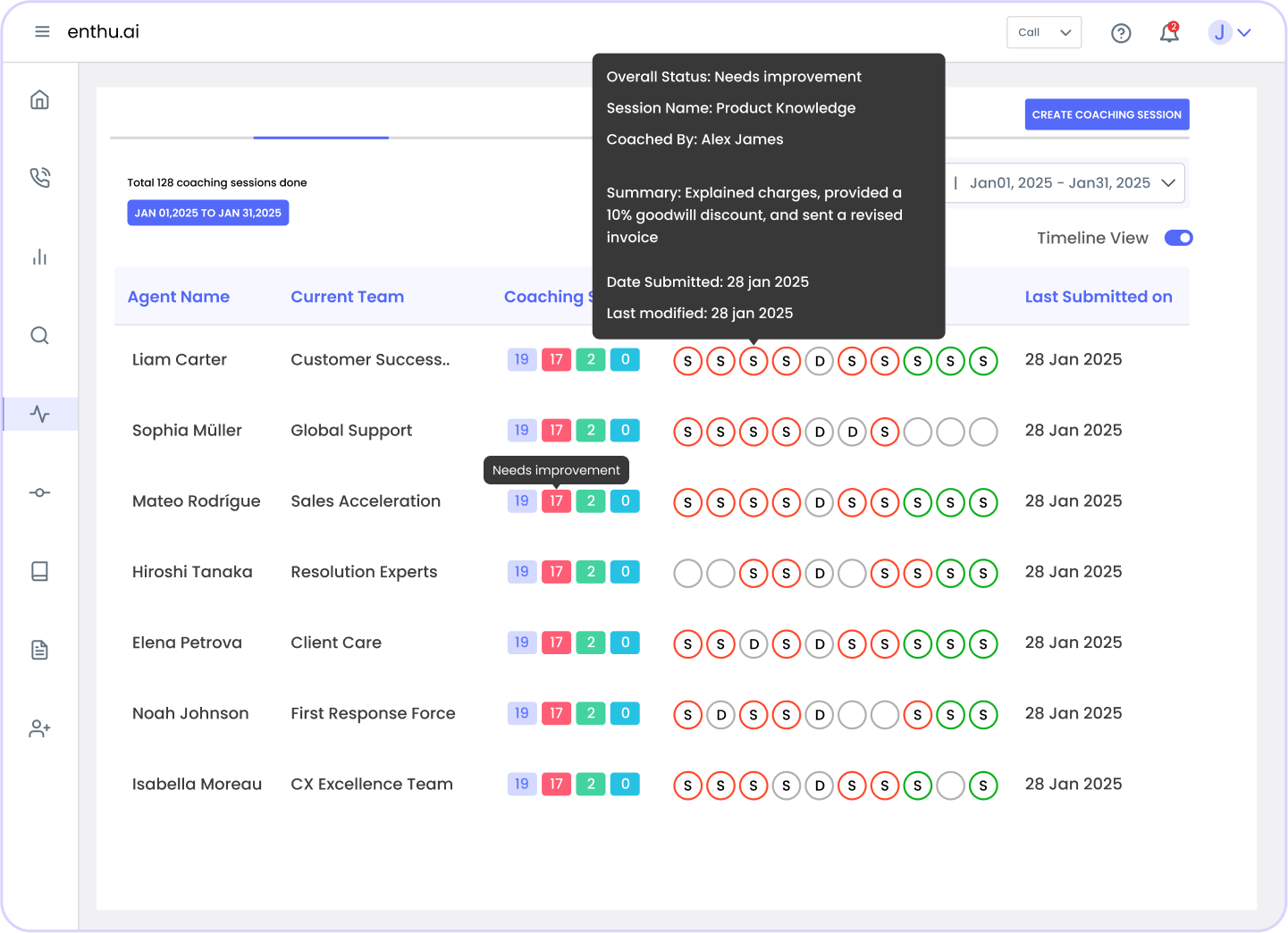
4. Increases efficiency
Manual QA processes traditionally review only 2-5% of total conversations, creating significant blind spots.
Modern QA programs, especially those powered by AI automation, analyze 100% of interactions, providing comprehensive coverage without proportional cost increases.
This complete visibility enables managers to identify process bottlenecks, streamline workflows, and optimize resource allocation. Organizations implementing automated QA report efficiency gains that translate to handling higher call volumes in half the time.
5. Drives customer loyalty
Consistent, high-quality service builds trust. Each additional contact costs businesses an average of $12 per call, while simultaneously eroding customer confidence.
Quality assurance programs ensure agents have the tools, knowledge, and support to resolve issues effectively on the first contact.
This consistency fosters customer loyalty – customers who receive reliable service become brand advocates, driving referrals and repeat business.
B. How do you evaluate quality assurance in customer service?
Measuring quality assurance effectiveness requires tracking the right metrics across multiple dimensions. Here’s how to evaluate your QA program comprehensively:
1. Key performance indicators (KPIs)
- First call resolution (FCR) measures the percentage of customer issues resolved on the first contact without requiring follow-up. Industry benchmarks range from 70-85%, with top performers exceeding 90%.
- Calculate FCR using this formula: FCR (%) = (Total Issues Resolved on First Contact ÷ Total Number of First Contacts) × 100
- Customer satisfaction score (CSAT) gauges immediate satisfaction after support interactions. Customers typically rate experiences on a 1-5 or 1-10 scale. Aim for 85-90% satisfaction rates as industry excellence.
- Net promoter score (NPS) measures customer loyalty by asking how likely customers are to recommend your company. Top-performing organizations achieve NPS scores above 50, while industry averages range from 20-40.
- Average handle time (AHT) tracks the average duration for handling customer inquiries, including talk time, hold time, and wrap-up. The recommended benchmark is 60-120 seconds for inbound calls, though this varies by industry complexity.
- Quality assurance score represents the composite score from your QA scorecard evaluations. This typically includes metrics like communication skills, process adherence, empathy, and compliance.
2. QA scorecard metrics
Your QA scorecard serves as the foundation for objective evaluation. Structure scorecards with 3-4 sections containing 2-5 questions per section. Each section should evaluate specific interaction areas:
- Process adherence: Did the agent follow required procedures, greet customers appropriately, and gather necessary information?
- Product knowledge: Did the agent demonstrate accurate understanding and provide correct solutions?
- Communication skills: Did the agent use appropriate tone, demonstrate empathy, and communicate clearly?
- Issue resolution: Was the problem resolved completely? Were next steps clearly explained?
- Compliance: Did the agent follow regulatory requirements and company policies?
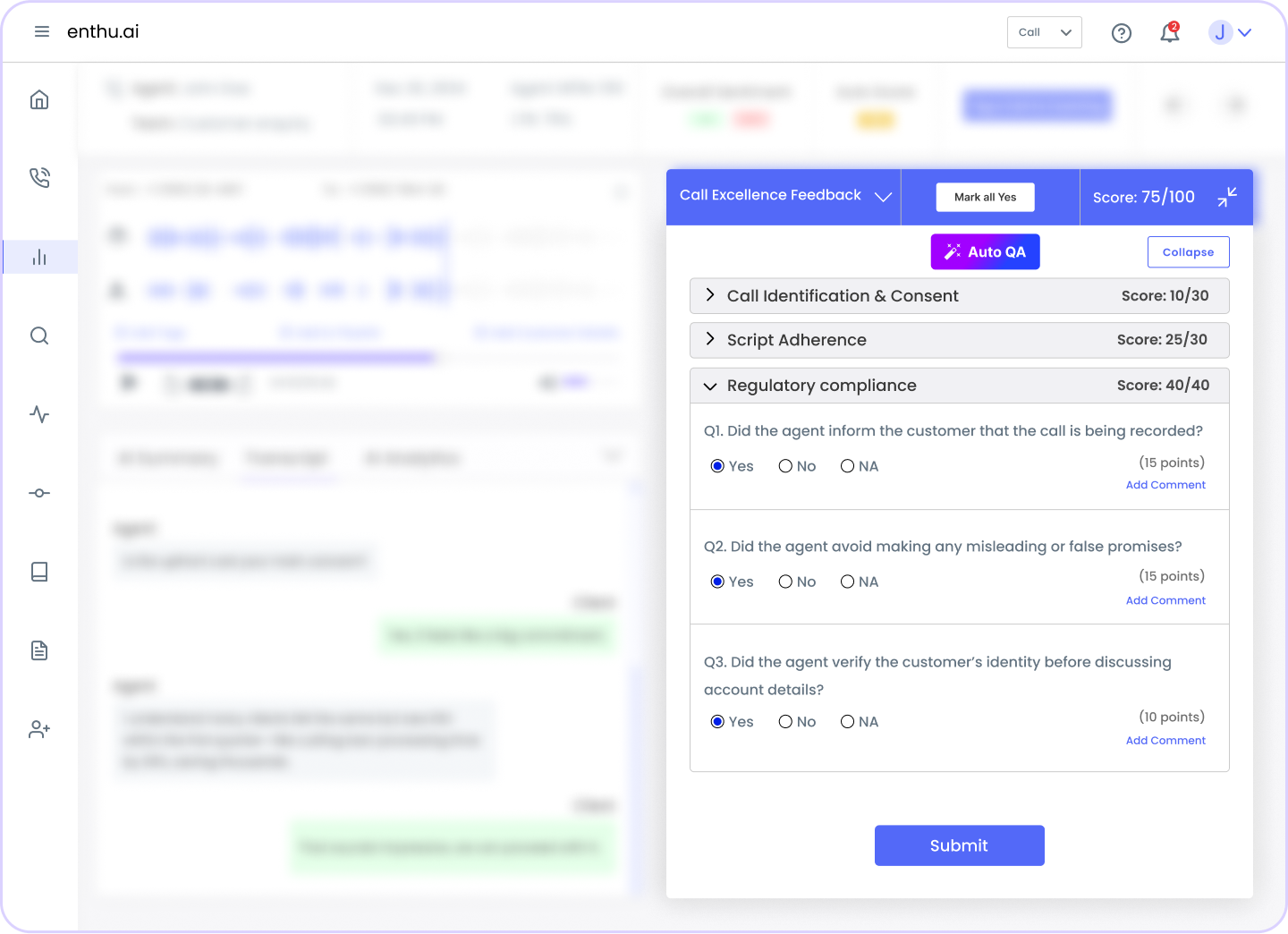
3. Technology-enabled measurement
Modern QA measurement increasingly relies on AI-powered automation. These tools provide:
- 100% interaction coverage: Unlike manual reviews limited to small samples, automated systems evaluate every conversation.
- Real-time feedback: AI detects issues as they occur, enabling immediate coaching interventions.
- Sentiment analysis: Advanced analytics identify customer emotions and agent empathy levels, providing nuanced performance insights.
- Consistent evaluation: Automated scoring eliminates human bias and ensures standardized assessments across all interactions.
C. 11 ways to improve customer service quality assurance in call centers
Elevating your QA program requires strategic implementation across people, processes, and technology. Here are 11 proven strategies:
1. Define clear quality standards
Establish specific, measurable criteria for what constitutes excellent service.
Document these standards comprehensively, covering compliance checks, customer engagement metrics, and sales opportunities.
Your quality standards should align with organizational goals and customer expectations.
2. Implement AI-powered auto QA
Manual QA reviews only 2-5% of conversations.
Auto QA analyzes 100% of interactions automatically, providing complete coverage while reducing costs.
AI-powered systems score calls in seconds using your exact evaluation criteria, freeing managers to focus on coaching rather than reviewing.
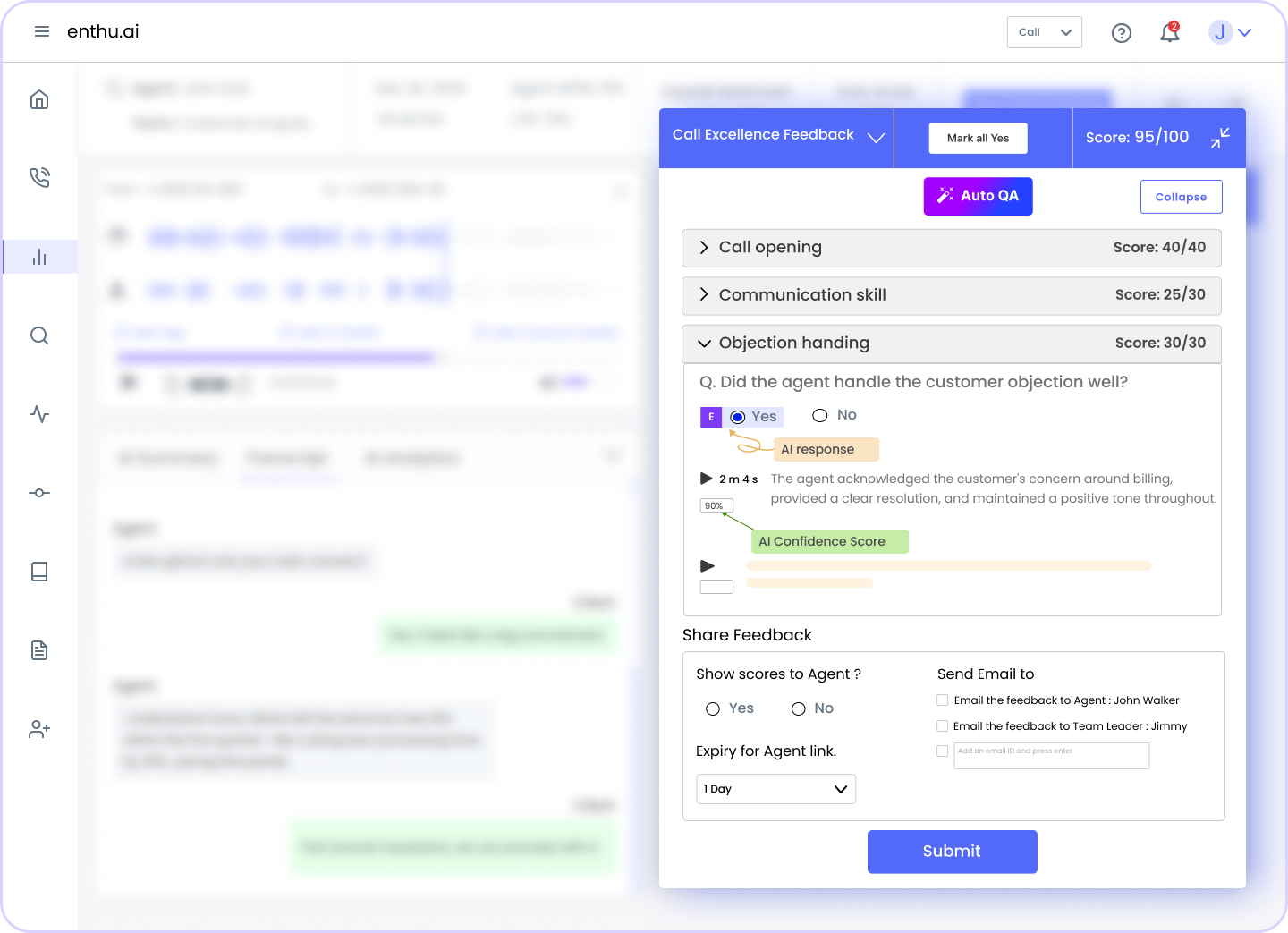
3. Create comprehensive QA scorecards
Develop balanced scorecards with 3-4 sections and 2-5 questions per section.
Use a mix of binary (yes/no) scoring for clear-cut criteria and rating scales (1-5) for subjective elements like empathy.
Include auto-fail items for critical errors such as compliance violations.
4. Establish regular calibration sessions
Schedule regular call calibration meetings where QA analysts, supervisors, and managers review sample interactions together.
Compare scores, discuss discrepancies, and work toward standardized scoring practices.
This ensures consistency across evaluators and refines criteria based on evolving business needs.

5. Monitor all communication channels
If your support is omnichannel, implement QA across email, live chat, SMS, phone, and other channels.
Each platform has unique characteristics – live chats are fast-paced, emails are detailed, voice calls feel personal.
Ensure consistent service quality by using adapted scorecards for each channel while maintaining unified standards.
6. Provide targeted, actionable feedback
Feedback should be specific, timely, and constructive.
Use actual call recordings as examples. Make it a two-way conversation by asking agents, “How do you think that interaction went?”.
Highlight wins first, then address improvement areas with actionable suggestions.
7. Implement continuous coaching programs
Transform QA insights into personalized coaching plans.
Identify skill gaps through performance data and create tailored training that addresses individual learning styles.
Regular one-on-one coaching sessions based on QA evaluations improve agent performance by 25-30% while increasing job satisfaction.
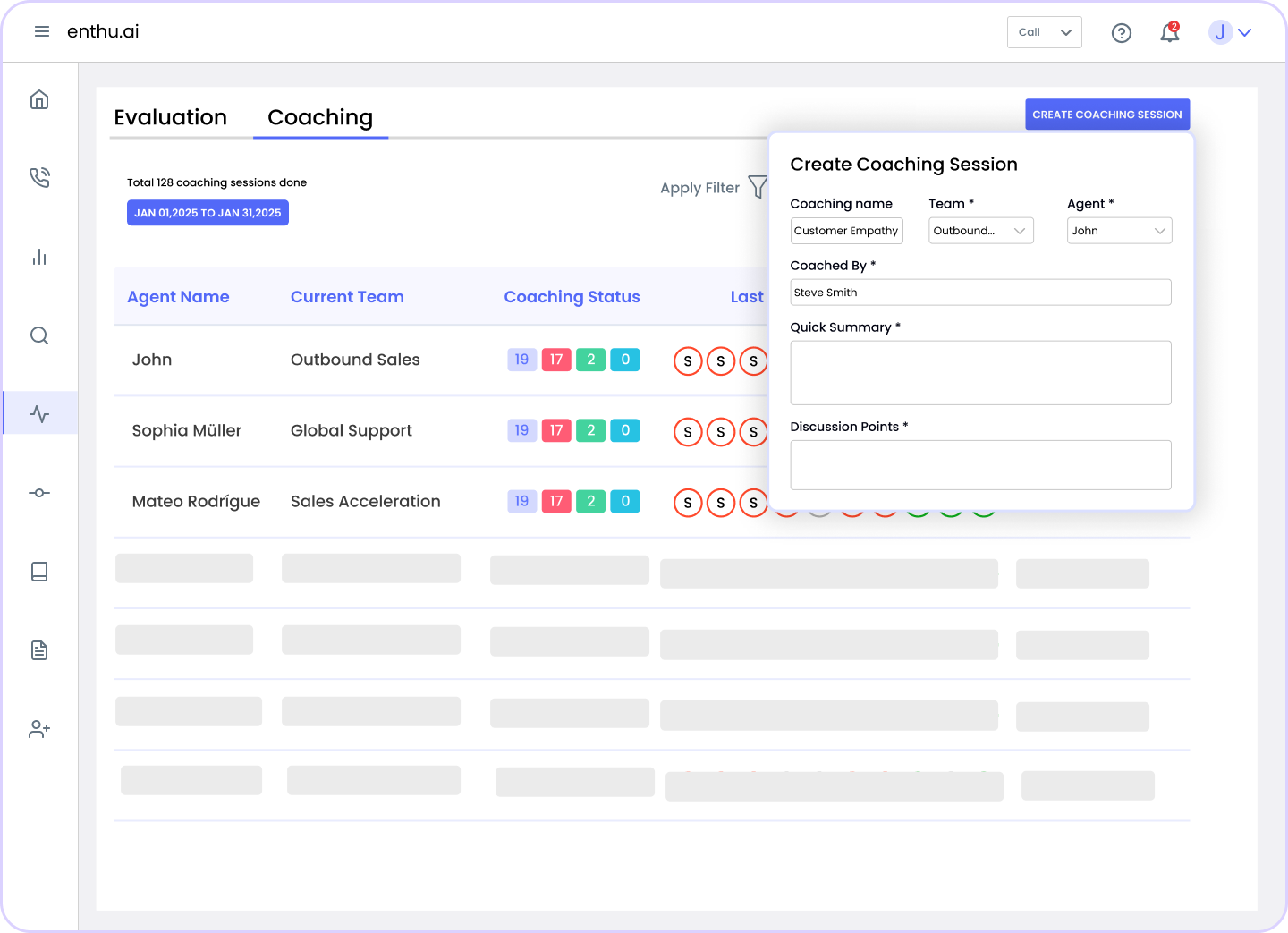
8. Use predictive QA analytics
Leverage AI to flag high-risk interactions before they escalate.
Predictive analytics identify patterns indicating potential customer churn, compliance risks, or service failures.
This proactive approach allows managers to intervene early, preventing issues rather than reacting to them.
9. Track performance trends over time
Monitor QA metrics weekly and monthly to identify patterns.
Are specific agents consistently struggling with certain interaction types? Do particular shifts show quality degradation?
Trend analysis reveals systemic issues requiring process changes rather than individual coaching.
10. Integrate real-time agent assistance
Deploy AI-powered real-time guidance that monitors conversations and provides instant suggestions to agents.
These tools detect risks, recommend responses, and ensure compliance protocol adherence during live interactions.
Real-time assistance improves first-call resolution while reducing agent stress.
11. Encourage peer reviews and self-assessment
Foster a feedback culture by implementing peer review programs. Agents reviewing colleague interactions builds collaboration and shared learning.
Additionally, encourage self-assessment where agents evaluate their own performance.
This promotes accountability and reduces dependency on supervisor feedback.
D. 6 tips to build a customer service quality assurance program in your organization
Creating an effective QA program from scratch requires methodical planning and execution. Follow these six steps:
1. Secure stakeholder buy-in and define objectives
Start by gaining support from C-suite leadership, operations, HR, and other key stakeholders. Without executive buy-in, even well-designed programs struggle to succeed.
Define clear, measurable objectives aligned with business goals.
Are you focused on improving CSAT scores, ensuring compliance, reducing average handle time, or all three?
Document these objectives and communicate them across the organization.
2. Establish quality standards and evaluation criteria
Develop comprehensive quality standards covering all aspects of customer interactions. These should include compliance requirements, customer engagement expectations, and performance benchmarks.
Create evaluation criteria organized into categories such as:
- Communication skills and tone
- Product knowledge and accuracy
- Problem-solving and resolution effectiveness
- Process adherence and compliance
- Empathy and customer-centricity
Document these standards meticulously, as they serve as the benchmark against which all interactions are evaluated.
3. Build robust QA scorecards
Design scorecards that translate quality standards into measurable criteria. Structure them with clear sections, specific questions, and appropriate scoring mechanisms.
Choose rating scales based on evaluation needs:
- Binary (Yes/No) for clear-cut criteria
- 1-5 scales for subjective elements requiring nuance
- Weighted scoring to emphasize priority areas
- Auto-fail items for critical compliance violations
Make scorecard creation a collaborative process involving agents, supervisors, and QA analysts. This builds buy-in and ensures criteria reflect real-world challenges.
4. Select the Right QA Technology and Tools
Choose technology that matches your scale and objectives. Consider:
- Auto QA platforms that analyze 100% of interactions using AI.
- Call recording and monitoring tools for comprehensive interaction capture.
- Speech and text analytics for sentiment detection and pattern identification.
- Integration capabilities with existing CRM and contact center systems.
The right tools streamline evaluation, provide real-time insights, and scale as your operation grows.
5. Train evaluators and conduct calibration
Provide comprehensive training for all QA evaluators. Cover evaluation criteria, scoring guidelines, and effective feedback techniques.
Use practical examples of interactions to ensure evaluators fully grasp quality standards.
Implement regular calibration sessions where evaluators review the same interactions independently, then compare scores.
Discuss discrepancies, align interpretations, and ensure consistency across the team.
6. Launch, monitor, and continuously improve
Begin with a pilot program monitoring a subset of interactions. Collect feedback from agents and evaluators to identify confusion or process issues.
Once refined, launch the full program while establishing regular review cycles. Analyze QA data monthly to identify trends, celebrate wins, and adjust criteria as business needs evolve.
Create a feedback loop where QA insights directly inform training programs, process improvements, and agent coaching. This transforms QA from a monitoring exercise into a continuous improvement engine.
E. Transform your call center QA with Enthu.AI

Building a world-class quality assurance program requires the right technology partner. Enthu.AI provides agentic AI-powered contact center intelligence that automates your entire QA workflow, from transcription to actionable insights.
The platform transcribes every conversation, auto-scores 100% of calls across empathy, compliance, and script adherence, and delivers real-time coaching feedback. This eliminates traditional QA bottlenecks where only 2-5% of interactions get reviewed.
Customers report reduced QA time, improved compliance, faster agent onboarding, and 5% appointment rate improvements.
With encrypted data security and seamless integration, Enthu.AI scales from 10-person teams to 1,000-agent centers, transforming your contact center into a growth engine powered by intelligence.
FAQs
1. What’s the difference between quality assurance and quality control in customer service?
Quality assurance prevents issues through defined processes, while quality control checks completed interactions for errors. QA is proactive; QC is reactive—both ensure consistent service quality.
2. How much does customer service quality assurance cost?
Manual QA can be expensive due to labor. AI-powered Auto QA cuts costs by 50%+ and delivers up to 600% ROI within the first year.
3. What percentage of customer service interactions should be reviewed for QA?
Manual QA reviews just 2–5% of interactions. AI-driven QA covers 100%, giving complete insights across all channels.
4. How do you measure the success of a quality assurance program?
Measure FCR, CSAT, NPS, AHT, QA scores, and compliance rates. Track trends to assess impact on customer experience and performance.
5. How often should QA scorecards be updated?
Update QA scorecards quarterly or after major business changes. Calibrate monthly and review annually to stay aligned with goals.

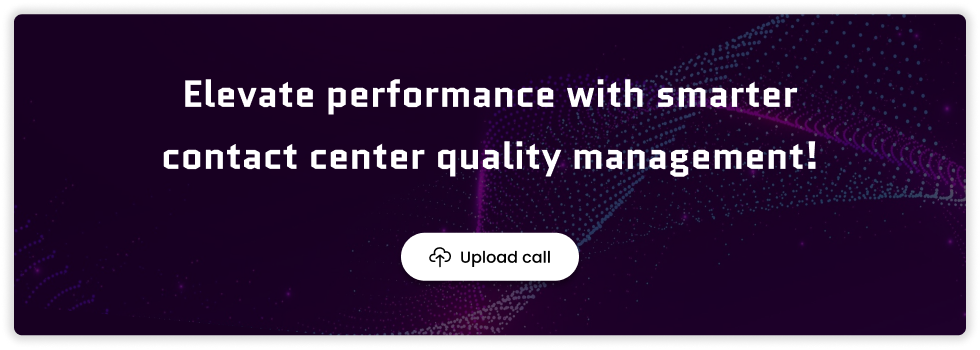


 On this page
On this page
